The National Indigenous Fashion Awards nominees for 2022 announced
The Indigenous fashion sector is going from strength to strength as support networks grow.

‘There’s no turning back” for the Indigenous fashion sector.
As a number of initiatives have come to fruition over the past three years to nurture the nascent industry, Indigenous Fashion Projects chief executive David Giles-Kaye believes that while more support is required, the momentum has built to propel it forward.
“It’s still a very emerging sector, but it’s so much stronger than it was,” he tells The Australian.
“We’ve got the support and the pathways, but right from the beginning we were looking at long-term, sustainable development, which is about building networks, and this was something (we heard) when we did our first consultation with the sector three years ago.
“(Indigenous designers) felt disconnected with the (broader fashion) industry across the board. That’s one of the biggest changes, and I think that’s one of the things that will allow the sector to grow.”
He believes a handful of brands that have become leaders in this space, such as Maara Collective, Liandra Swim, Kirrikin and Ngali (nominated in two categories, including the Fashion Designer Award, which it won last year), will “make it easier and easier for others to come through now”.
“The momentum’s there, the networks are being established and now those networks will be shared by the (leaders) of this world and continue to evolve from there.”
One of the significant initiatives in the sector is the National Indigenous Fashion Awards, now in its third year, whose full list of nominees is announced on Wednesday. Winners will be revealed at a ceremony next month during the Darwin Aboriginal Art Fair, where the annual Country to Couture catwalk show will also take place.
The awards have evolved in their own right, too, says Giles-Kaye.
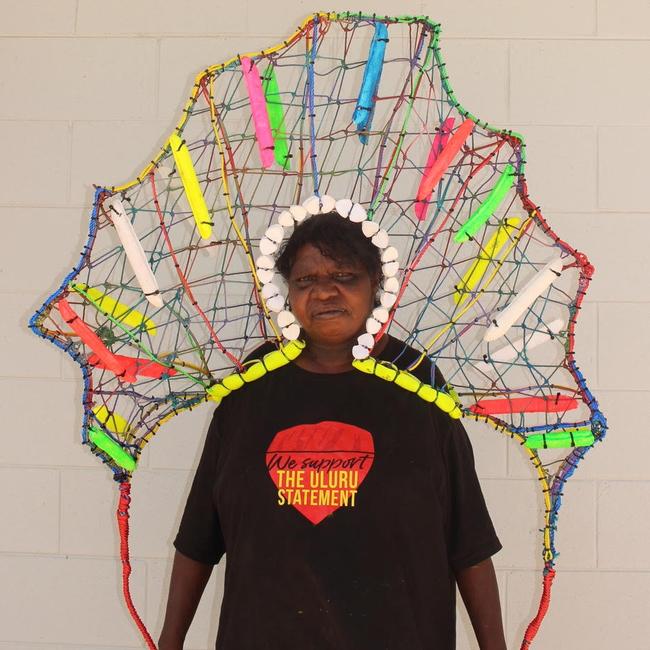
This year a new Business Achievement Award has been added. “Part of the purpose of Indigenous Fashion Projects is building practice and enterprise, so this award was to capture the business development side of things.”
The Wearable Art category has been split into two, adding Traditional Adornment into the mix.
“We’re fine-tuning the categories to be the best reflection of the work that’s being done in the sector and to recognise it.”
Layers of meaning
This year’s NIFA nominees offer works as diverse as the land and experiences from which they are created.
Some are based deep in tradition and craft, such as Mylene Holroyd of Pormpuraaw Art & Culture Centre in Cape York. The Kugu/Thaayorre artist is nominated in the Wearable Art category for her Rose Hat, created from discarded fishing nets using traditional weaving skills.
Others are more contemporary, such as Simone Arnol and Bernard Singleton, based in Far North Queensland, whose Prohibit collection is nominated under the Business Achievement Award. The duo, both descended from the Stolen Generations, use upcycled denim to express the experiences of family members and elders in Aboriginal missions.
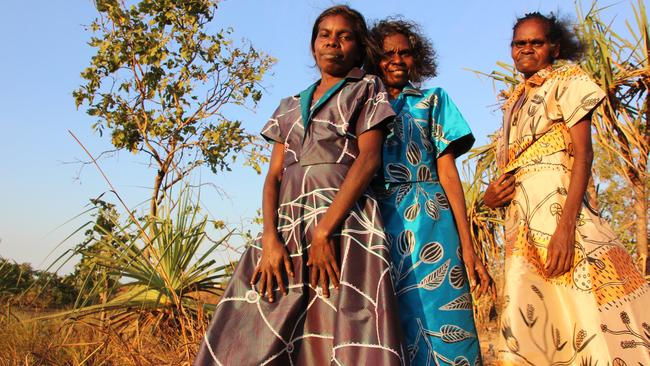
It’s those layers of meaning that are imbued throughout the process of Indigenous fashion that make it unique.
Lillardia Briggs-Houston has been a NIFA dual nominee in each of the three years of the awards, this year for Wearable Art and Textile Design. The Wiradjuri artist and designer is based in Narrandera, NSW, where she was raised by her grandmother, who taught her to sew.
“Practising on country is really important to me,” Briggs-Houston tells The Australian.
While she first practised as a textile artist, she now also creates the fashion designs for her Ngarru Miimi label.
“I try to tell a story through my art that reflects my country and experience with my family being raised in culture on country. Even the palette reflects what my country looks like.”
Briggs-Houston is motivated by not only sharing cultural heritage, but also by the lack of action in preserving it at a governmental level, citing the destruction of the Juukan Gorge in Western Australia by mining giant Rio Tinto as just one example.
Her design, made up of a velvet burnout bodysuit with reed decoration and a silk chiffon wrap skirt, features handpainted and printed designs that draw on local Wiradjuri cultural artefacts from wood, shell and stone.
Central to these are the coolamons, wooden carrying bowls, that are cut from the trunk of trees and heated and moulded into shape, along with shell middens created by the discarded shells of freshwater mussels.
“I wanted to incorporate things from that area, to make it harmonious. Not only in the sense of fashion, but culturally, to know that we have shell middens by reeds, for example.
“The textiles will make people think about how it all connects and think about things, about trying to protect cultural heritage.”
She adds that while textiles have always come first for her, and for many other Indigenous designers, she is “excited to contribute to the challenge of how we express culture not only through textiles but also the body of garment”.
“That’s a really beautiful point in the growth (of this sector) that we’re seeing.”
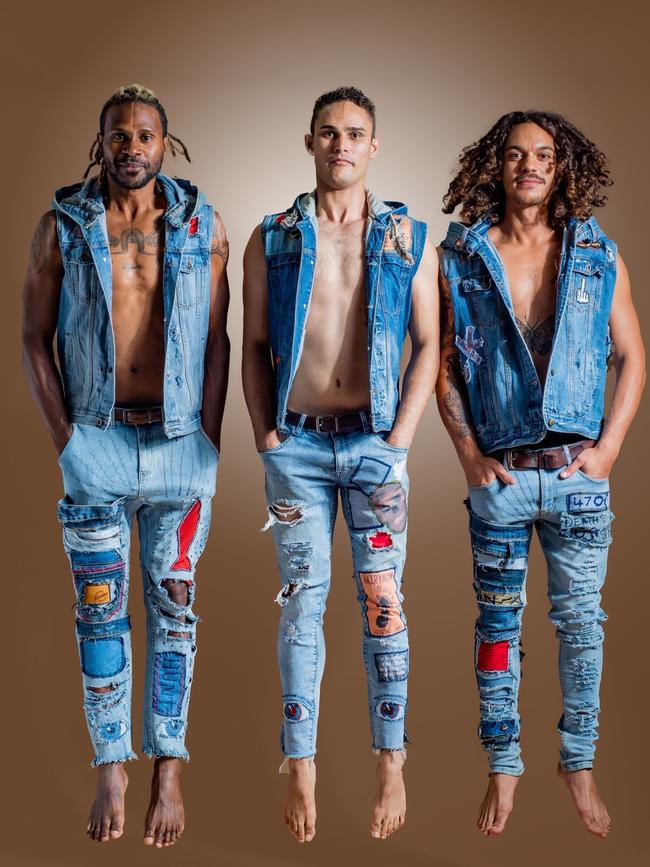
Sometimes the messages are more obvious.
Clothing The Gaps, based in Melbourne on Wurundjeri Country, launched in 2020 during Covid, and is nominated in the Business Achievement Award. Founder Laura Thompson started the label as a social enterprise and a way of funding health promotion work in Victoria.
“Fashion is a really powerful tool for advocacy,” says Thompson, adding that the brand was also involved in the successful Free the Flag campaign to free the Aboriginal flag from copyright.
“Certainly in the fashion space, I’ve noticed so many of the garments (Indigenous designers) create do tell our stories and make statements. That’s what is so special about them, when you wear the clothes they’re so much more layered in meaning.”
That comes with additional responsibility, as Thompson has discovered.
“I’ve made a few friends in politics; they ask what Clothing The Gaps is going to say about the Uluru Statement. At some point we will have to make a public statement.
“What does that look like? I don’t know. As a health practitioner who just wanted to sell more T-shirts to get kids to drink more water, I don’t know.”
Leading by example
Giles-Kaye says that while there are only two collaborations nominated this year, they are built on best practice.
“We’re approached quite regularly by people wanting to collaborate with artists or art centres,” he says. “We help to facilitate the connections. But it’s also really important that organisations like Arts Law and the Copyright Agency get involved on the agreement side of things.
“There’s a lot of understanding to be had and time that needs to go into it. A lot of (mainstream) fashion labels might have the inclination to have the time, but the way the fashion industry works, it doesn’t really allow for it.”
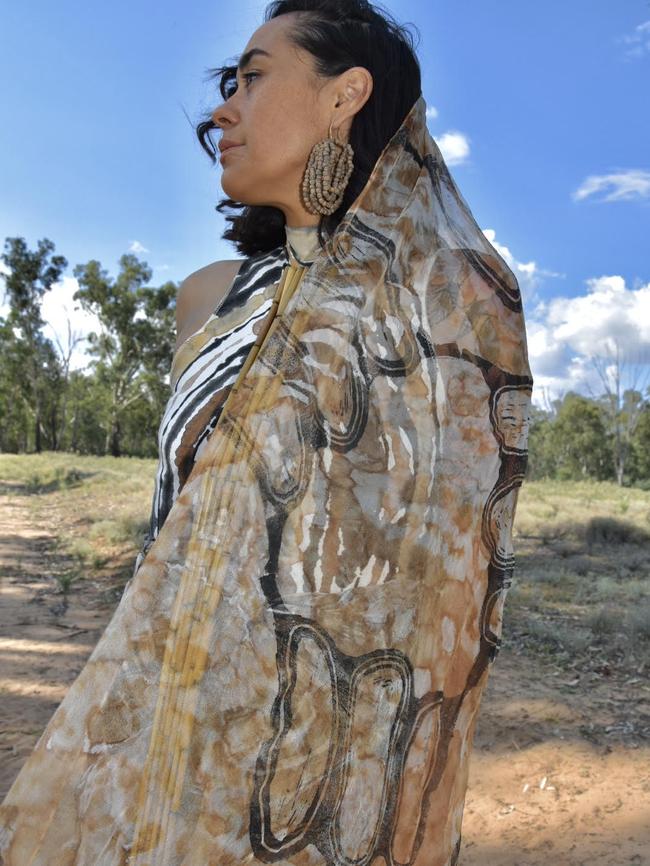
As one example, the nominated collaboration between Linda Puna of Mimili Maku Arts (in northwest South Australia) and Melbourne’s Unreal Fur, resulting in a collection of outerwear emblazoned with Puna’s colourful designs, took 18 months to come to fruition.
While more due diligence and best practice are going into collaborations, Giles-Kaye says those that came before have helped to whet the appetite for fashion within Indigenous art centres around the country.
“I’ve just been in Arnhem Land and the centres up there are really focused on fashion,” he says.
“It’s what everyone’s talking about. From the older ladies to the young guys playing basketball. You’re in a place so far away from anywhere else, so steeped in tradition, but also everyone’s doing TikToks. It’s this incredible juxtaposition.
“Fashion is such a connecting point.”
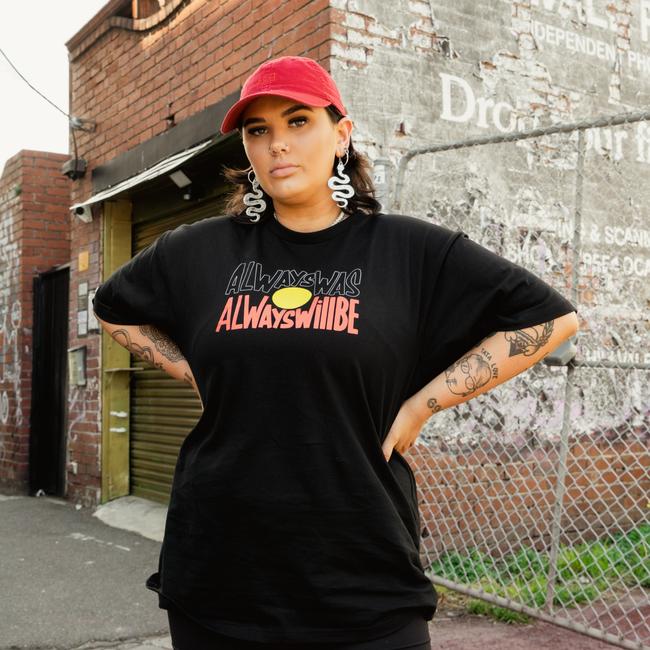
Both Thompson and Briggs-Houston are excited for the future of the sector.
Briggs-Houston acknowledges that the sector will only get stronger as more designers lead by example, and younger designers follow and add to that with more formal training: “When we see more trained designers, we’ll see the rise in how First Nations fashion evolves.”
Thompson hopes that in future, every house will have a “blak rack”.
“Imagine if you go to your wardrobe and you have all blak brands in there,” she says.
“Not just statement tees, but just good solid merino classics. We know that when we support blak business it goes on to support the community.”
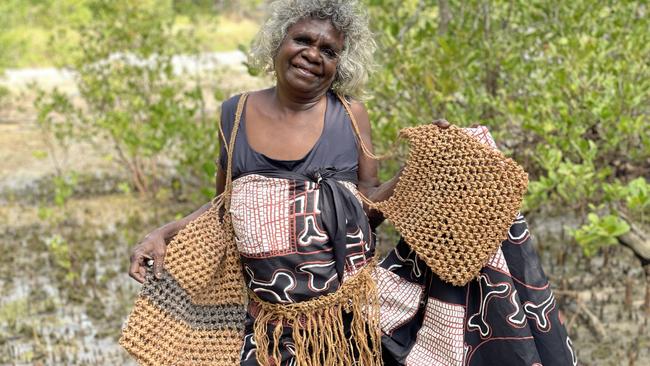
National Indigenous Fashion Awards Nominees 2022
TRADITIONAL ADORNMENT AWARD
● Cassie Leatham of Yanggurdi / Wild Blak Arts
● Esther Yarllarlla – Babbarra Women’s Centre & Maningrida Art Centre
COMMUNITY COLLABORATION AWARD
● Linda Puna (Mimili Maku Arts) x Unreal Fur
● Djunngaal & Yarrabah Arts and Culture Centre X Francoise Lane of Indij Design
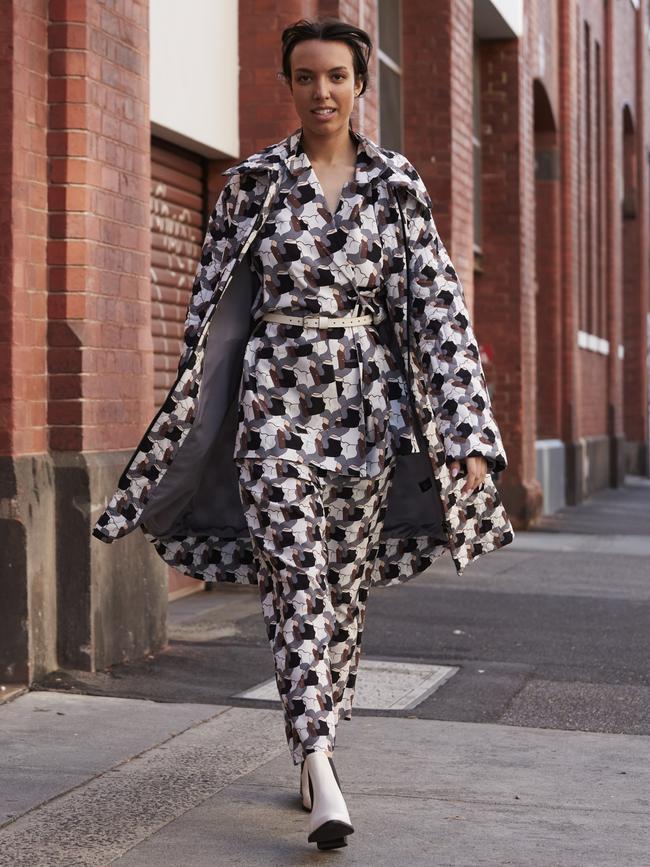
BUSINESS ACHIEVEMENT AWARD
● Simone Arnol & Bernard Singleton – Prohibit collection
● Laura Thompson – Clothing the Gaps
● Denni Francisco – Ngali X Warmum Art Centre (pictured left)
● Nagula Jarndu Women’s Arts & Resource Centre
● Babbarra Designs – Babbarra Women’s Centre & Maningrida Art Centre
TEXTILE DESIGN AWARD
● Philomena Yeatman – Yarrabah Arts & Cultural Precinct
● Briana Enoch – Jarawee
● Lillardia Briggs-Houston – Ngarru Miimi
● Eunice Napanangka Jack – Ikuntji Artists
● Mavis Marks – Ikuntji Artists
● Roseranna Larry – Ikuntji Artists
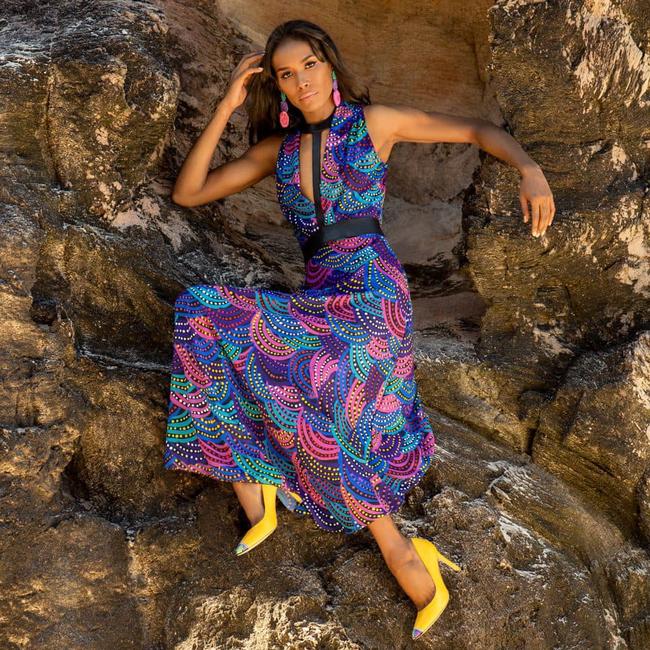
WEARABLE ART AWARD
● Irene Robinson
● Lillardia Briggs-Houston – Ngarru Miimi
● Paul McCann
● Mylene Holroyd – Pormpuraaw Art & Culture Centre
FASHION DESIGNER AWARD
● Cheryl Creed – Murrii Quu Couture
● Briana Enoch – Jarawee
● Denni Francisco – Ngali X Warmun Art Centre
